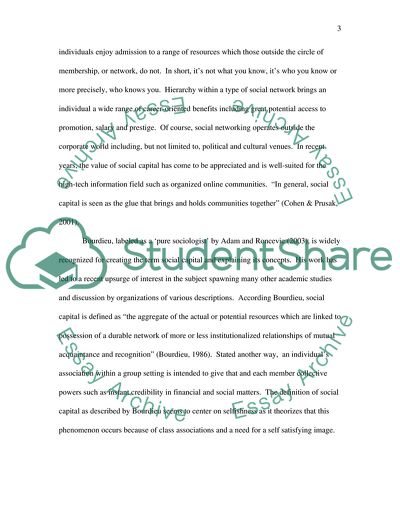Cite this document
(Social Capital: Burt and Bourdieu Term Paper Example | Topics and Well Written Essays - 1500 words, n.d.)
Social Capital: Burt and Bourdieu Term Paper Example | Topics and Well Written Essays - 1500 words. https://studentshare.org/macro-microeconomics/1704681-compare-and-contrast-the-view-of-social-capital-offered-by-burt-with-that-of-bourdieu
Social Capital: Burt and Bourdieu Term Paper Example | Topics and Well Written Essays - 1500 words. https://studentshare.org/macro-microeconomics/1704681-compare-and-contrast-the-view-of-social-capital-offered-by-burt-with-that-of-bourdieu
(Social Capital: Burt and Bourdieu Term Paper Example | Topics and Well Written Essays - 1500 Words)
Social Capital: Burt and Bourdieu Term Paper Example | Topics and Well Written Essays - 1500 Words. https://studentshare.org/macro-microeconomics/1704681-compare-and-contrast-the-view-of-social-capital-offered-by-burt-with-that-of-bourdieu.
Social Capital: Burt and Bourdieu Term Paper Example | Topics and Well Written Essays - 1500 Words. https://studentshare.org/macro-microeconomics/1704681-compare-and-contrast-the-view-of-social-capital-offered-by-burt-with-that-of-bourdieu.
“Social Capital: Burt and Bourdieu Term Paper Example | Topics and Well Written Essays - 1500 Words”. https://studentshare.org/macro-microeconomics/1704681-compare-and-contrast-the-view-of-social-capital-offered-by-burt-with-that-of-bourdieu.


